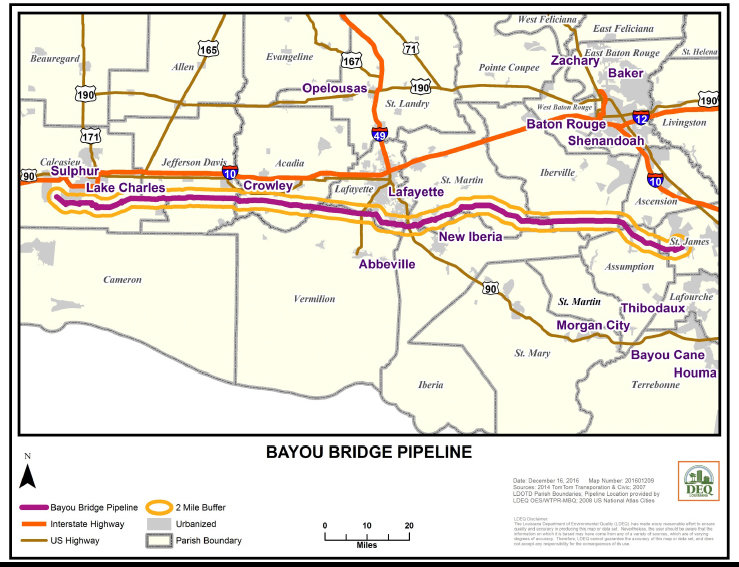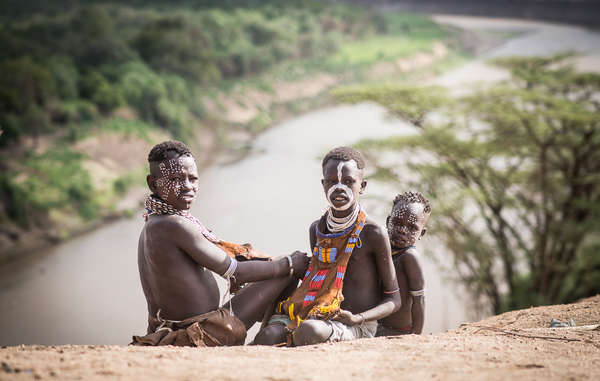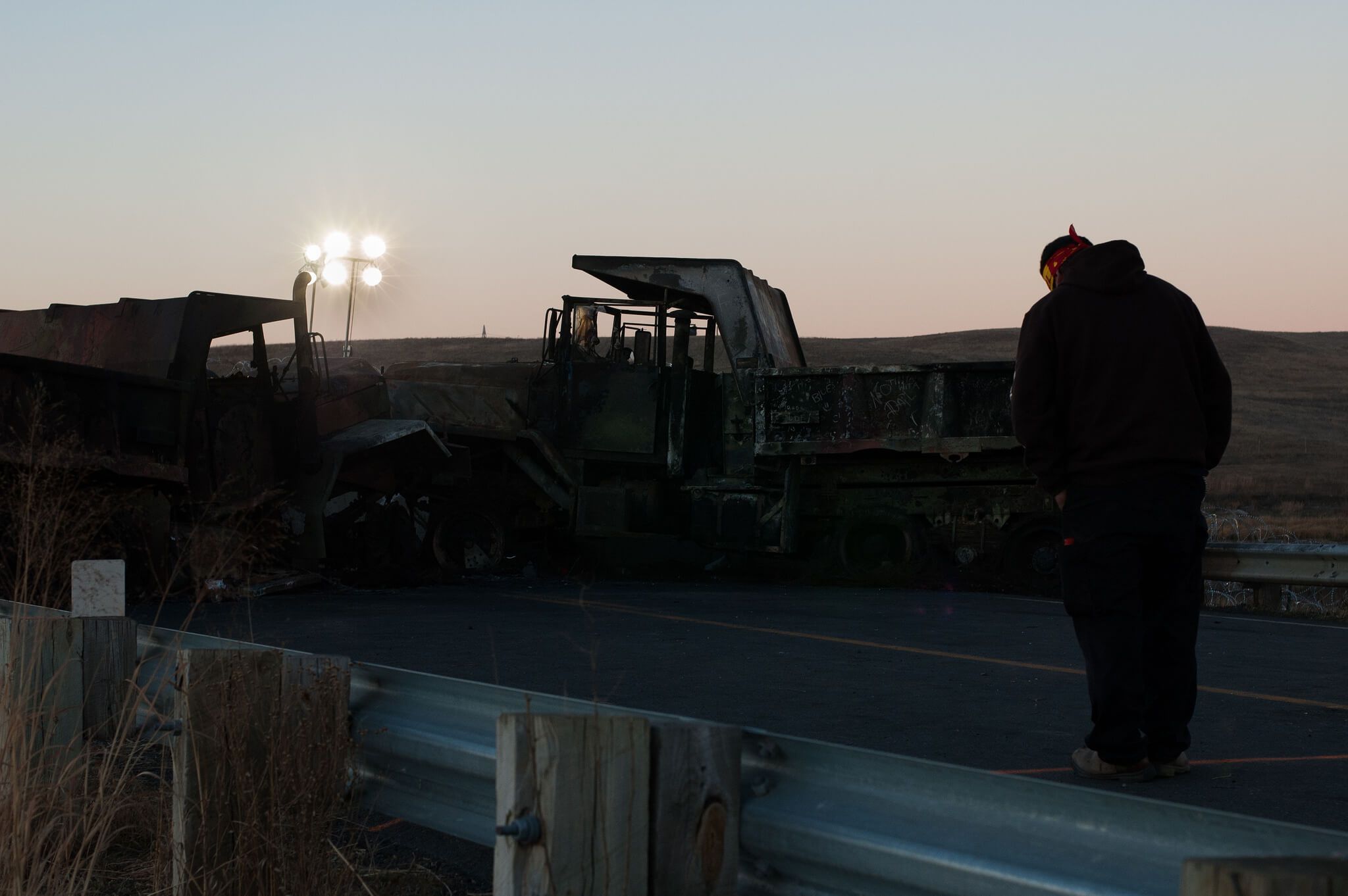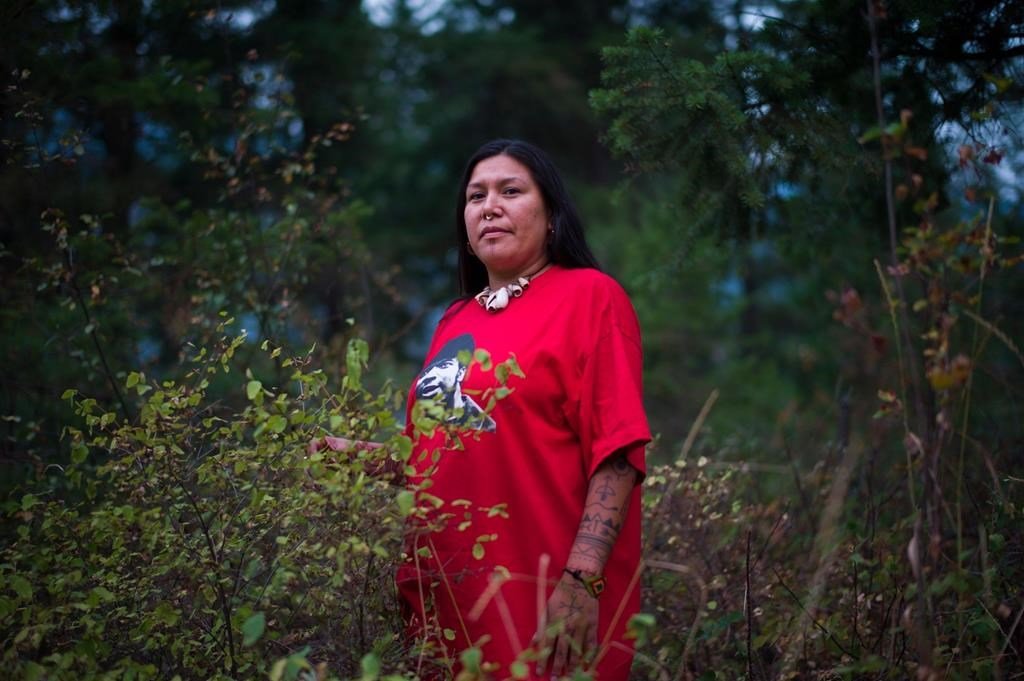
by Deep Green Resistance News Service | Sep 19, 2018 | Protests & Symbolic Acts
In Solidarity with #NoBayouBridgePipeline National Day of Action
by Ginew
BEMIDJI, Minnesota—Early Tuesday morning, September 18th, a group of indigenous water protectors from the Ginew Collective, raised a tipi and blocked a bridge south of Bemidji, halting work at a construction site for the recently permitted line 3 pipeline. Ginew (Golden Eagle) is a grassroots, frontlines effort led by indigenous women to protect Anishinaabe territory from the destruction of Enbridge’s Line 3 tar sands project.
While the tipi blockade prevented bulldozers and street paving machines from laying down new asphalt over the Mississippi, a local Anishinaabe woman held a water ceremony on the bank of the river offering medicine, prayers and songs. The action took place just miles from 3000 year old Dakota village sites near Lake LaSalle where Clearwater county road 230 crosses the headwaters of the Mississippi River.
One member of Ginew declared “We’re here today protecting our water, our burial sites and standing in solidarity with our brothers and sisters down south who are fighting the Bayou Bridge Pipeline. The Mississippi River begins here in the headwaters, where we are standing right now, and it ends in the Gulf of Mexico, in the bayous, where folks have been fighting against Energy Transfer Partners (ETP) for months, putting their bodies on the line for clean water and safer communities. We’re fighting Enbridge here, a different company that is also invested in ETP. Enbridge wants to cross over 200 water ways and drill under the Mississippi River multiple times to construct Line 3. Enbridge wants to put this new poisonous black snake where the river begins and turn this area into an industrial corridor. They want to poison our seed of hope for clean water and turn us into another alley of cancer.”
Many of the work trucks bore out of state plates, one indigenous woman pointed to the out of state plates and explained that “Extractive industry impacts indigenous peoples first and worst – the men come into our communities to build these destructive projects and we women face increased risks of violence, harassment, and potentially life-threatening assaults while our native communities are jurisdictionally limited in the right to prosecute offenders.”
Another water protector put it simply. “We will make it clear that indigenous territories are not sacrifice zones, and the tar sands machine must stop. Line 3 is Enbridge’s single largest project in the company’s history, and with the cancellation of Energy East and uncertain financial backing of Kinder Morgan and Keystone XL, this has become a fight that could cripple the industry while changing the narrative of indigenous peoples within mainstream society. Standing Rock planted seeds across Turtle Island and the world, we Anishinaabe in what is now known as Minnesota are prepared to fight and to stand side by side with indigenous and non-indigenous peoples alike in our work.”

by Deep Green Resistance News Service | Sep 16, 2018 | Biodiversity & Habitat Destruction
Featured image: Lake Turkana and the River Omo, a lifeline to many tribal peoples, are drying up due to mega dam. © Nicola Bailey/ Survival International, 2015
by Survival International
UNESCO added Kenya’s Lake Turkana to its World Heritage Site Endangered List in June, a sign it believes the iconic lake’s survival is at risk.
Experts believe it is drying up largely because of the Gibe III dam, which lies upstream in Ethiopia and was completed in 2016.
For the eight different tribes of Ethiopia’s Omo valley region, the Gibe III dam and related sugar plantations project have already proved devastating. The dam has enabled local authorities to syphon off water from the Omo river to irrigate vast sugar plantations.
Forcibly evicted from their land, many of the country’s tribespeople have lost not only their homes but an entire way of life. The dam has ended the natural flood they depended on for flood retreat agriculture as well as depriving them of access to the river for fishing and for growing their crops.
Survival has received disturbing reports that tribal peoples are suffering from hunger and continue to suffer abuse and harassment if they speak out about the situation. Many communities are under pressure to relocate to government villages, a policy that most oppose.
The dam is also causing problems for the thousands of tribal peoples in northern Kenya who live around Lake Turkana and who fish its waters for their livelihood.
According to Ikal Ang’elei, director of the NGO Friends of Lake Turkana which has campaigned for years against the Gibe III dam: “The lives of local communities now hang in the balance given that their main sources of livelihood are facing extinction. This decision by the UNESCO World Heritage Committee should serve as a notice to Ethiopia to cancel any further dams planned on the Omo River.”
As early as 2010, one such expert predicted that the dam would reduce the lake’s inflow by some 50% and would cause the lake’s depth to drop to a mere 10 meters. “The result could be another Aral Sea disaster in the making,” he warned.
The World Heritage Centre Committee now recognises that the dam has led to “overall rapid decline in water levels” and has meant that seasonal fluctuations have been “heavily disrupted.” As a result, the Committee agrees that “the disruption of the natural flooding regime is likely to have a negative impact on the fish population in Lake Turkana, which may in turn affect the balance of the ecosystem, the livelihoods of the local fishing communities and the floodplains, which support herbivore species.”
UNESCO’s decision follows several years of lobbying by indigenous and international organizations.
The Omo Valley tribes did not give their free, prior and informed consent to the Gibe III dam project, a fact that Survival International highlighted in its submission to the African Commission on Human and Peoples’ Rights.
Despite the mounting evidence of the serious impacts of Gibe III on tribal peoples in Ethiopia and Kenya, the Ethiopian government is currently building another dam on the Omo river called Koysha, or Gibe 4.
by Deep Green Resistance News Service | Aug 31, 2018 | Lobbying
Featured image: Pipeline intended to cross Jasper National Park in the Canadian Rocky Mountains. Robert McGouey / Getty Images
by Lorraine Chow / Ecowatch
A Canadian court “quashed” approval of the Trans Mountain pipeline expansion on Thursday, a major setback for Prime Minister Justin Trudeau, whose government agreed to purchase the controversial project from Kinder Morgan for $4.5 billion Canadian dollars (U.S. $3.5 billion) in May.
It’s a stunning victory for Indigenous groups and environmentalists opposed to the project, which is designed to nearly triple the amount of tar sands transported from Alberta to the coast of British Columbia.
The Federal Court of Appeal ruled that the National Energy Board’s review—as explained by the Canadian Press—”was so flawed that the federal government could not rely on it as a basis for its decision to approve the expansion.”
The project has been at the center of widespread protests from environmental groups and First Nations ever since November 2016, when Trudeau approved a $7.4 billion expansion of the existing Trans Mountain pipeline that would increase the transport of Alberta tar sands oil from the current 300,000 barrels per day to 890,000 barrels per day and increase tanker traffic nearly seven-fold through the Burrard Inlet.
Specifically, the court said it was an “unjustifiable failure” that the National Energy Board did not consider the environmental impacts of the increased tanker traffic.
The court additionally concluded that the government “fell well short” with properly consulting with the Indigenous groups involved in the case, including the Tsleil-Waututh and Squamish on British Columbia’s south coast.
The ruling will force the National Energy Board to redo its review of the pipeline and the government to restart consultations with the Indigenous groups. It also means that the construction that has already began in central Alberta must cease.
In effect, the court has halted the 1,150-kilometer project indefinitely and it will remain in “legal limbo until the energy regulator and the government reassess their approvals to satisfy the court’s demands,” CBC wrote about today’s decision.
Notably, the decision was made the same day Kinder Morgan’s shareholders voted to approve the $4.5 billion sale to Canada, which means the country owns a proposed pipeline project that could be subject to years of further review, the publication pointed out.
The court’s judgment could be appealed a final time to the Supreme Court of Canada.
The Minister of Finance Bill Morneau said that the government has received the ruling and will review the decision.

by Deep Green Resistance News Service | Jul 20, 2018 | Colonialism & Conquest
Featured image: Dakota Access Pipeline Resistance Camp, October 12, 2016. Photo: Irina Groushevaia/flickr.
by Rebecca Pilar Buckwalter Poza / Intercontinental Cry
Standing Rock protesters faced below-freezing conditions, water cannons, sponge rounds, bean bag rounds, stinger rounds, teargas grenades, pepper spray, Mace, Tasers, and even a sound weapon. Officers carried weapons openly and threatened protesters constantly, by many accounts. Hundreds of protesters were injured, and more than two dozen were hospitalized.
As of November 2016, 76 local, county, and state agencies had deployed officers to Standing Rock. Between August 2016 and February 2017, authorities made 761 arrests. One protester was arrested and slammed to the ground during a prayer ceremony; another described being put in “actual dog kennels” with “photos of the types of dogs on the walls and piss stains on the floor” in lieu of jail. She wasn’t told she was under arrest; she wasn’t read her rights. Once detained, protesters were strip searched and denied medical care. Belongings and money were confiscated, the latter never returned.
Law enforcement officers razed the camp in February 2017. The protest may have ended, but aggression against protesters did not. Law enforcement and prosecutors’ efforts to charge protesters with as serious a crime as possible have become battles to convict them and obtain the maximum sentence possible.
During a Oct. 27, 2016, roadblock protest of the Dakota Access Pipeline at Standing Rock, several fires were set. By whom, no one knew. Prosecutors charged Little Feather of the Chumash Nation, also known as Michael Giron, and Rattler of the Oglala Lakota, Michael Markus, with “use of fire to commit a felony” as well as civil disorder, anyway. The charging documents cite knowledge of “several fires … set by unidentified protesters.”
Police tactics on Oct. 27, by the way, included the use of pepper spray and armored vehicles. Law enforcement and prosecutors only became more aggressive after President Trump assumed office, at his direction.
Both Little Feather and Rattler opted to plead guilty, not because there was adequate evidence against them but because the mandatory minimum sentence would be 10 years if they were convicted at trial. That was a risk not worth taking: The Guardian has reported that surveys found 84 to 94 percent of the jury pool has prejudged Standing Rock protesters. Little Feather was sentenced to three years in prison. Rattler is expected to receive the same or a similar sentence.
A third protester, Red Fawn Fallis, pleaded guilty to charges of civil disorder and illegal possession of a firearm by a convicted felon. She was accused of firing a gun during the protest, though she said she doesn’t remember doing so. The gun in question was owned by an informant who allegedly seduced Fallis. Despite these obvious flaws, she and her attorneys opted not to risk trial, citing both anti-protester sentiment and lacking disclosure by the prosecution. She received a 57-month sentence.
The ongoing experiences of Standing Rock protesters are all the more horrifying in contrast with the recent pardon of Dwight and Steven Hammond. Trump pardoned the pair, who’ve long “clashed” with the federal government, at the behest of a “tycoon” friend of Vice President Mike Pence. Both had been convicted of setting fires on federal land for a 2001 fire, while only Steven was convicted of a 2006 fire. When the mandatory minimum sentence for the pair—who originally benefited from pro-rancher bias—was imposed on appeal, it sparked an armed standoff led by another famous family of anti-government extremists, the Bundys.

by Deep Green Resistance News Service | Jul 18, 2018 | Obstruction & Occupation
Free Secwepemc Political Prisoner Kanahus Manuel
by Secwepemc Women’s Warrior Society
Saturday July 14, 2018 – The Secwepemc Women’s Warrior Society is outraged at the arrest of Kanahus Manuel. This morning Kanahus Manuel was arrested by the RCMP, an occupying force that has been criminalizing Indigenous peoples on our own lands and forcing us onto reservations since contact.
Last week the Tiny House Warriors reclaimed an ancestral village to block the planned route of the Trans Mountain Expansion pipeline. We are currently building solarized Tiny Houses on our land to block Kinder Morgan. By doing this, we are providing housing to Secwepemc families, re-establishing our village sites, and asserting our Secwepemc responsibility to our lands and waters.
As Secwepemc women, we will resist construction on the North Thompson line of the Trans Mountain Expansion pipeline, which is expected to begin by the fall. We are re-establishing a permanent village on our land that the pipeline is trespassing without our consent. We have never provided and will never provide our collective free, prior and informed consent – the minimal international standard – to the Kinder Morgan Trans Mountain Pipeline Project or the Man Camps. We are taking a stand against the destructive, genocidal, and assimilative forces that have been visited upon us by colonial Canadian governments since first contact.
We have faced intimidation by the white supremacist RCMP and Park ranger goons of the Canadian state who want us removed from our own lands. We are on Secwepemc lands that neither the federal government nor provincial government has any jurisdiction on. While there is much talk by the federal government about respecting Indigenous rights and reconciliation, the Trans Mountain buy-out expansion and arrest of Secwepemc woman warrior Kanahus Manuel is a declaration of war.
We are Secwepemc women. We are still here. We are unafraid. We carry the waters of our lands within us. We are guided by the warrior spirit of our ancestors. We will defend our lands and lives by any means necessary!
– STATEMENT BY SECWEPEMC WOMEN’S WARRIOR SOCIETY
Saturday July 14, 2018
Unsurrendered Secwepemc territories
For media inquiries: 250-852-2532





